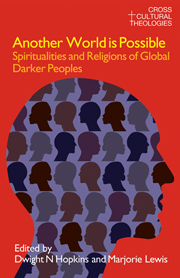Book contents
- Frontmatter
- Dedication
- Contents
- Acknowledgements
- Contributors
- Introduction
- Part I India
- Part II Japan
- Part III Australia
- Part IV Hawaii
- Part V England
- Part VI South Africa
- Part VII Botswana
- Part VIII Zimbabwe
- Part IX Ghana
- Part X Cuba
- Part XI Jamaica
- 19 Social Conditions and Spiritual Solutions in the Caribbean
- 20 The Church and the Jamaican Society
- Part XII Brazil
- Part XIII USA
- Endnotes
- Select Bibliography
- Index of Subjects
- Index of Names
20 - The Church and the Jamaican Society
from Part XI - Jamaica
- Frontmatter
- Dedication
- Contents
- Acknowledgements
- Contributors
- Introduction
- Part I India
- Part II Japan
- Part III Australia
- Part IV Hawaii
- Part V England
- Part VI South Africa
- Part VII Botswana
- Part VIII Zimbabwe
- Part IX Ghana
- Part X Cuba
- Part XI Jamaica
- 19 Social Conditions and Spiritual Solutions in the Caribbean
- 20 The Church and the Jamaican Society
- Part XII Brazil
- Part XIII USA
- Endnotes
- Select Bibliography
- Index of Subjects
- Index of Names
Summary
The physical location of Jamaica in the Caribbean hints at the historical, cultural and economic and political dynamics that have shaped its reality. The historical rivalry for countries in the Caribbean among Europeans, starting in the fifteenth century in the Christian Era and the subsequent struggles by oppressed and disenfranchised groups for freedom from enslavement and colonialism, has resulted in variety in language and political systems among Jamaica and its nearest neighbours. Jamaica's neighbours include Cuba, Spanish speaking and socialist, the island of Hispaniola, with Spanish-speaking on one side (The Dominican Republic) and Creole and French speaking on the other side (Haiti). To the north, simultaneously somewhat like the sword of Damocles (a potential source of economic and political calamity), and a source of desire as a ticket out of poverty, is Florida, the southernmost tip of the United States.
The language differences and the differences in political systems, between Jamaica and its nearest neighbours, speak of the colonial enterprise of Europeans who conquered the Caribbean and the Americas, who exterminated the indigenous Taino population, enslaved and imported Africans to work for the profit of the Europeans. In response to the protest of the enslaved population, pressure from emerging economic interests and theological dissent in Europe, the Africans were grudgingly granted freedom from slavery in 1838, and Chinese and Indians were recruited as indentured workers.
- Type
- Chapter
- Information
- Another World is PossibleSpiritualities and Religions of Global Darker Peoples, pp. 281 - 290Publisher: Acumen PublishingPrint publication year: 2009



